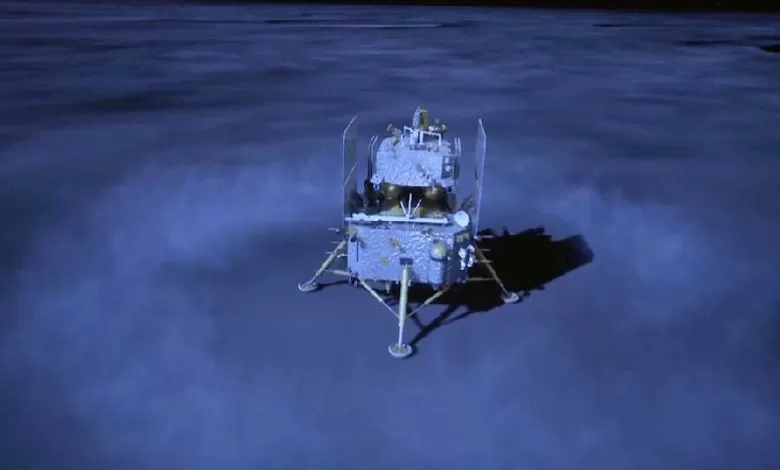China Makes Historic Lunar Landing on Far Side

- China's Chang'e-6 probe successfully landed on the far side of the Moon
- The 53-day Chang'e-6 mission involves complex tasks
- This mission marks a significant leap for China's space program
In a significant stride for China’s space program, the Chang’e-6 lunar probe has touched down on the unexplored far side of the Moon.
This marks a pioneering effort by Beijing to collect samples from this rarely ventured lunar region, specifically within the vast South Pole-Aitken Basin, one of the largest known impact craters in the solar system.
Initiated on May 3, the Chang’e-6 embarks on a challenging 53-day mission. Now grounded, its primary objective is to gather lunar soil and rocks along with conducting various experiments within the designated landing area.
The collection process, employing both drilling and robotic arm techniques, is slated to conclude within two days, according to Xinhua.
Once samples are secured, the probe faces the unprecedented task of launching from the Moon’s far side, perpetually shielded from Earth’s view.
Scientists anticipate that materials retrieved from this enigmatic region will provide invaluable insights into lunar formation processes, given the comparative absence of ancient lava flows that blanket the near side.
Under President Xi Jinping’s leadership, China’s ambitions in space exploration have surged. The nation has committed substantial resources to its space program, aiming to narrow the gap with established space powers like the United States and Russia.
Notable milestones include the construction of the Tiangong space station and successful deployments of robotic rovers on both Mars and the Moon. Moreover, China stands as the third nation to independently achieve human spaceflight.
However, amid these achievements, concerns have been raised by Washington regarding potential military agendas and efforts toward space dominance disguised within China’s space endeavors.
Despite such skepticism, Beijing remains resolute in its aspirations, with plans to conduct crewed lunar missions by 2030 and establish a lunar base in the foreseeable future.
Simultaneously, the United States is gearing up for its own lunar exploration endeavors, with the Artemis 3 mission slated to return astronauts to the Moon by 2026, signifying a renewed space race amid evolving geopolitical dynamics.






